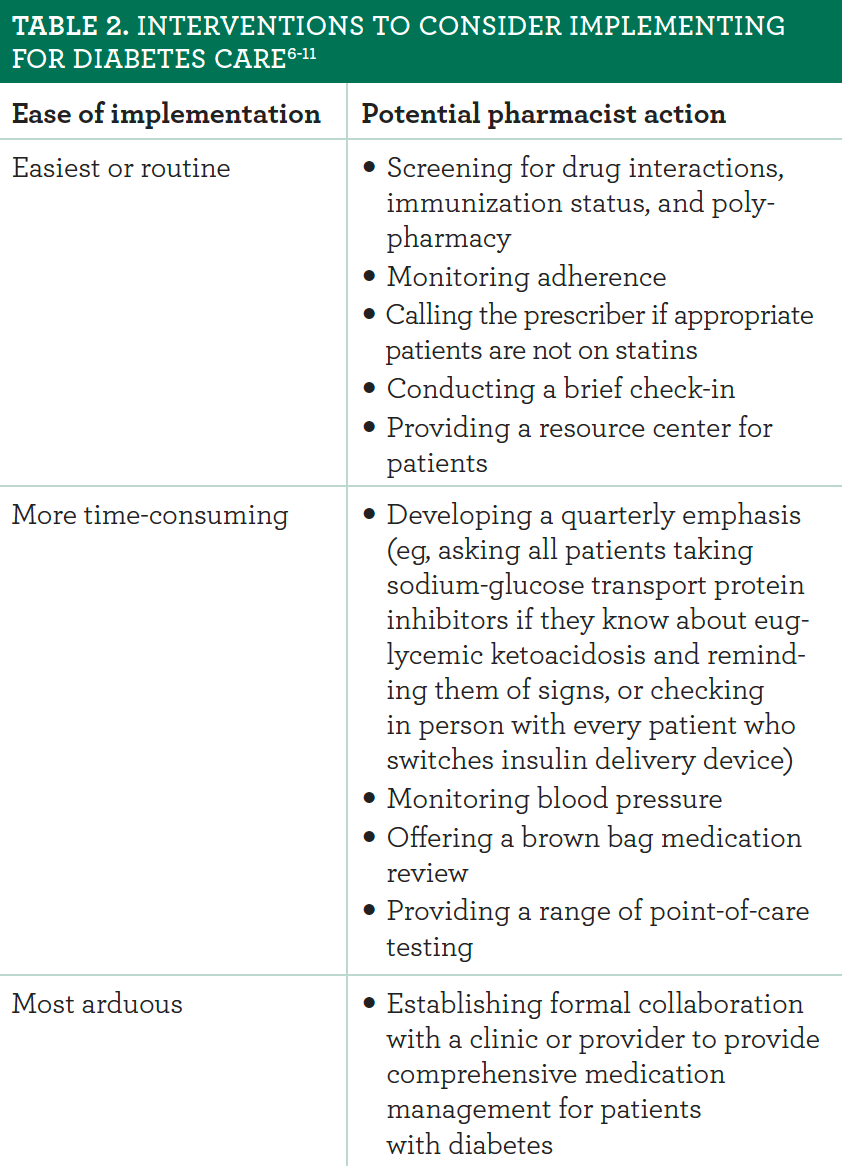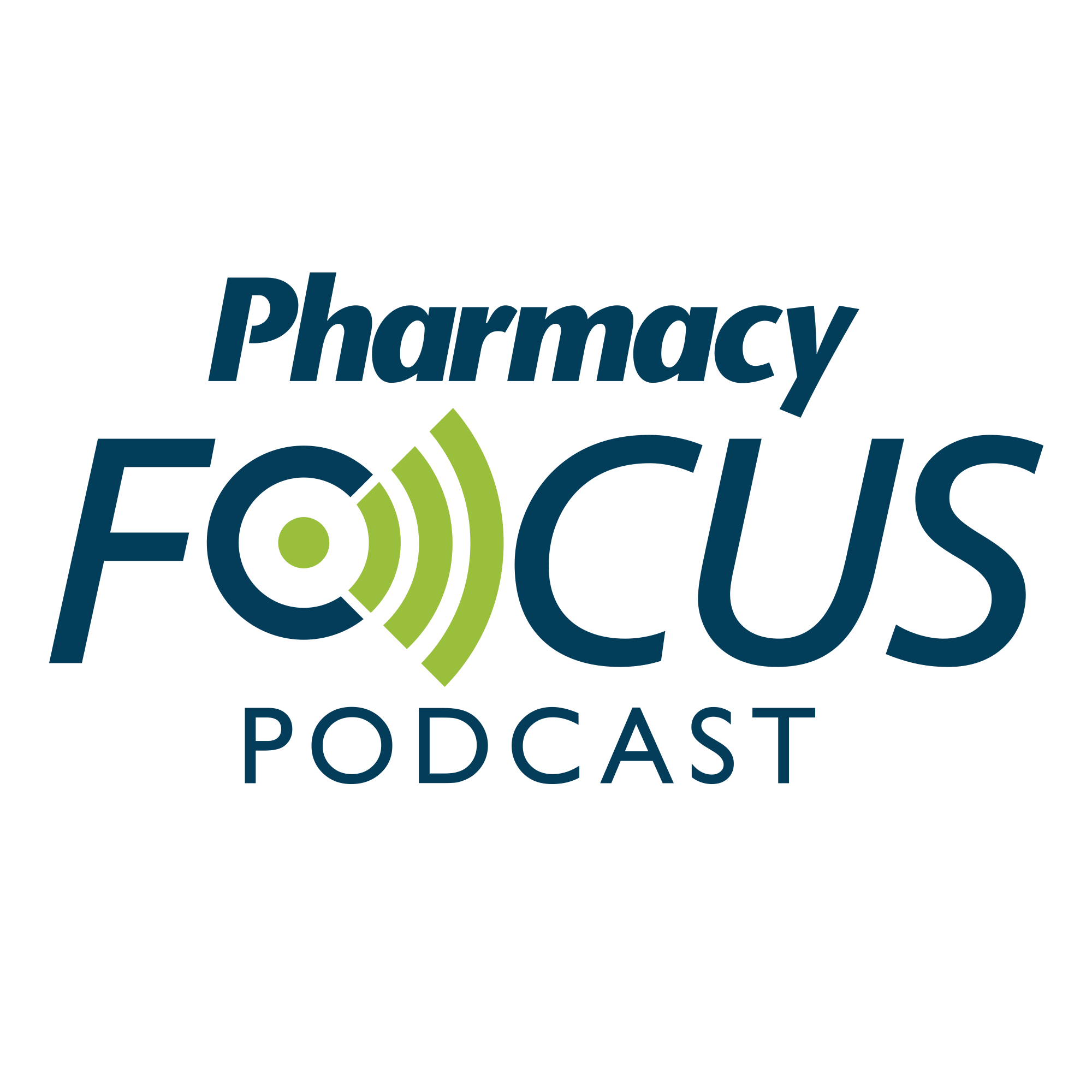Publication
Article
Pharmacy Times
Pharmacists Can Improve Diabetes Care
Author(s):
Establishing better patient relationships can lead to improved self-management.
In the United States, pharmacists account for the third-largest group of health care professionals. They are exceeded in number only by physicians and nurses.1-3
About 43% of American pharmacists practice in community settings.1 Public health policy makers are waking up to the fact that these highly skilled professionals are often underused. One disease on which pharmacists can make a considerable impact in terms of care is diabetes, which affects 10.5% of the US population.4 What would happen if they established better relationships with patients who have diabetes and used their skills to encourage better self-management?
Investigators from the United Kingdom’s National Health Service (NHS), concerned about the burden of diabetes on their health care system, have explored ways in which pharmacy teams, including pharmacists, technicians, and assistants, can provide diabetes interventions.5 The United Kingdom has been progressive in advancing pharmacy practice and providing fair remuneration for services. Many of its reasons for doing so are familiar to American pharmacists, such as striving for frequent patient access and for patient convenience, and recognizing the pharmacist’s unique skill set, which complements other providers’ skills. Pharmacists, if well deployed, can provide substantial benefits for patients and cost savings for payers.
In their report, the NHS investigators described a number of studies of pharmacist-provided diabetes care. According to the authors, many of them demonstrated positive results. Although it is unclear whether the duration of an intervention makes a difference, there is evidence that the greater the frequency of contact, the better the outcome.5 The report also identifies facilitators and barriers (see table 15).

DOING AS MUCH AS POSSIBLE
Many things will have to change for community-based pharmacists to be able to provide a complete range of interventions, but change is in the wind. A growing number of studies demonstrate the pharmacist’s value in diabetes management.6-11 Pharmacists may not have the know-how or time to deliver all interventions, but they can apply their trusted skills and begin the process of providing better care. It starts with taking small, though professionally rewarding, steps.
Among these are the following:
- Build tools that simplify drug regimen review. The very act of creating charts, tables, and tip sheets is educational and will expand one’s knowledge. In addition, many pharmacists do not use their information systems’ full functionality. Exploring what the system does and how to use the available tools can provide good information and save time.
- Create a list of interventions that are doable and important. table 26-11 lists some interventions, grouping them by ease of implementation.
- Do not underestimate the value of brief advice and interventions.5 Sometimes, a brief check-in with patients is enough to remind them to take action or to stimulate questions. If, during a review of any patient’s medications, a problem becomes apparent, talk to the patient. Offering brief interventions about adherence tricks; blood glucose monitoring; lifestyle changes, such as smoking cessation; and risk factors takes just a few minutes. It also helps to build relationships.
- Make the process a group effort. Talk to coworkers about diabetes and goals. Ask them to be partners. Agree to communicate with each other so that if a patient arrives after someone's shift has ended, one of the partners can address patient issues. An easy way to ensure follow-through is to tag the patient’s bag with a note that says, “Refer to pharmacist.”
- Set SMART (specific, measurable, achievable, realistic, and time-tagged) goals. In busy pharmacies, it can be difficult to carve out time to counsel patients. Unless they ask for counseling, and few do so,12,13 most patients do not talk to their pharmacists. Each day, make a point of identifying 1 patient who has diabetes, and initiate brief contact.14

CONCLUSION
Diabetes is a common disease, and pharmacists are common practitioners. That means people who have diabetes have a lot of contact with pharmacists. It is the perfect arrangement for pairing people who need advice and encouragement with health care professionals who can provide it.
REFERENCES
- Occupational employment and wages, May 2019: 29-1051 pharmacists. US Bureau of Labor Statistics. Updated March 31, 2020. Accessed June 26, 2020. https://www.bls.gov/oes/current/oes291051.htm#nat
- Occupational outlook handbook: physicians and surgeons. US Bureau of Labor Statistics. Updated April 10, 2020. Accessed June 26, 2020. https://www.bls.gov/ooh/healthcare/physicians-and-surgeons.htm
- Occupational outlook handbook: nurses. US Bureau of Labor Statistics. Updated April 10, 2020. Accessed June 26, 2020. https://www.bls.gov/ooh/healthcare/registered-nurses.htm
- Statistics about diabetes. American Diabetes Association. Updated March 22, 2018. Accessed June 26, 2020. https://www.diabetes.org/resources/statistics/statistics-about-diabetes
- Brewster S, Holt R, Portlock J, Price H. The role of community pharmacists and their position in the delivery of diabetes care: an update for medical professionals. Postgrad Med J. Published online March 26, 2020.doi:10.1136/postgradmedj-2020-137511
- Albasri A, Van den Bruel A, Hayward G, McManus RJ, Sheppard JP, Verbakel JYJ. Impact of point-of-care tests in community pharmacies: a systematic review and meta-analysis. BMJ Open. 2020;10(5):e034298. doi:10.1136/bmjopen-2019-034298
- Sherrill CH, Houpt CT, Dixon EM, Richter SJ. Effect of pharmacist-driven professional continuous glucose monitoring in adults with uncontrolled diabetes. J Manag Care Spec Pharm. 2020;26(5):600-609. doi:10.18553/jmcp.2020.26.5.600
- Lum MV, Cheung MYS, Harris DR, Sakakibara BM. A scoping review of polypharmacy interventions in patients with stroke, heart disease and diabetes. Int J Clin Pharm. 2020;42(2):378-392. doi:10.1007/s11096-020-01028-x
- Horii T, Atsuda K. Effects of pharmacist intervention on polypharmacy in patients with type 2 diabetes in Japan. BMC Res Notes. 2020;13(1):183. doi:10.1186/s13104-020-05032-2
- Snyder JM, Ahmed-Sarwar N, Gardiner C, Burke ES. Community pharmacist collaboration with a primary care clinic to improve diabetes care. J Am Pharm Assoc (2003). 2020;60(suppl 3):S84-S90. doi:10.1016/j.japh.2020.02.005
- Pousinho S, Morgado M, Falc.o A, Alves G. Pharmacist interventions in the management of type 2 diabetes mellitus: a systematic review of randomized controlled trials. J Manag Care Spec Pharm. 2016;22(5):493‐515. doi:10.18553/jmcp.2016.22.5.493
- Schommer JC. Patients’ expectation and knowledge of patient counseling services that are available from pharmacists. Am J Pharm Educ. 1997;61:402-406.
- Kelly DV, Young S, Phillips L, Clark D. Patient attitudes regarding the role of the pharmacist and interest in expanded pharmacist services. Can Pharm J (Ott). 2014;147(4):239‐247. doi:10.1177/1715163514535731
- Spence MM, Makarem AF, Reyes SL, et al. Evaluation of an outpatient pharmacy clinical services program on adherence and clinical outcomes among patients with diabetes and/or coronary artery disease. J Manag Care Spec Pharm. 2014;20(10):1036‐1045. doi:10.18553/jmcp.2014.20.10.1036
Newsletter
Stay informed on drug updates, treatment guidelines, and pharmacy practice trends—subscribe to Pharmacy Times for weekly clinical insights.







